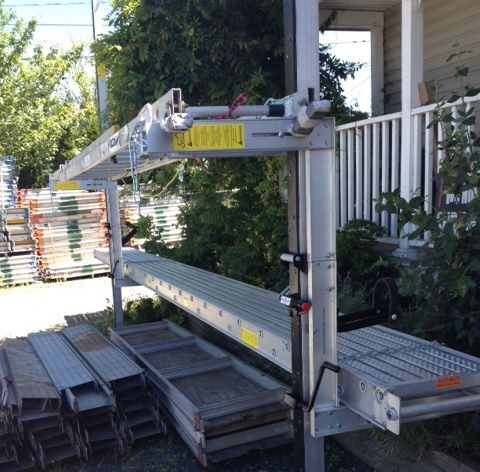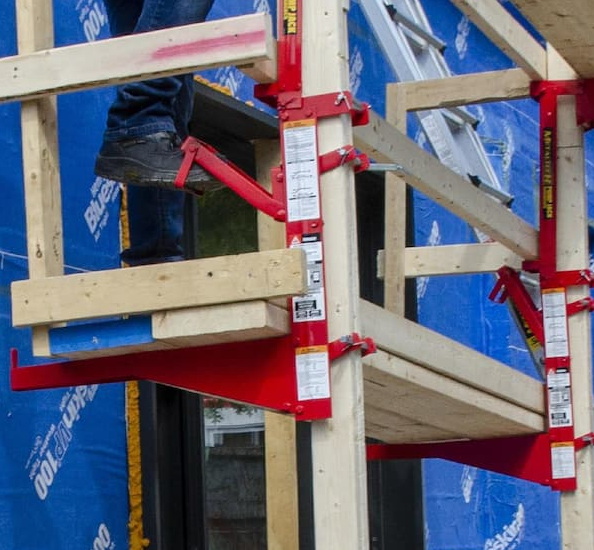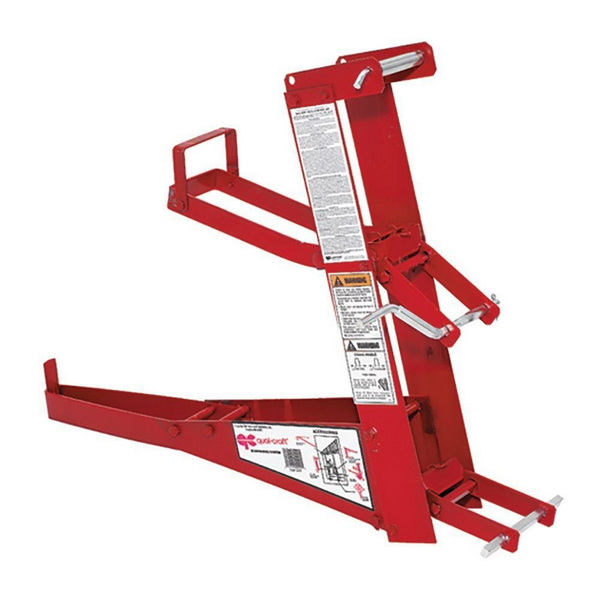Content Menu
● Understanding the Pump Jack Scaffolding System
● Ease of Installation: A Step-by-Step Guide
● User-Friendly Operation
● Safety Considerations
● Advantages of Pump Jack Scaffolding Systems
● Potential Challenges
● Integrating Video Resources for Enhanced Understanding
● Step-by-Step Dismantling Guide
● Advanced Safety Features and Considerations
● Conclusion
● FAQ
>> 1. What is a pump jack scaffolding system?
>> 2. How easy is it to install a pump jack system?
>> 3. What safety measures should be taken when using a pump jack system?
>> 4. Are pump jack systems suitable for all types of projects?
>> 5. How can video resources aid in the setup and use of a pump jack system?
● Citations:
Pump jack scaffolding systems offer a versatile and efficient solution for various projects, including siding, painting, roofing, and general construction[1]. Their popularity stems not only from their adaptability but also from their relative ease of installation and use, making them a favorite among both professionals and experienced DIYers. This article explores the installation process, usability, safety considerations, and advantages of pump jack scaffolding systems.

Understanding the Pump Jack Scaffolding System
A pump jack scaffolding system consists of vertical poles, a work platform, and movable brackets (pump jacks) that allow users to raise or lower the platform as needed[1]. This design provides flexibility for working at different heights without the complexity of traditional scaffolding[1]. The system's core components include:
- Pump Jack Poles: These can be made of aluminum or wood and serve as the vertical support structure[1].
- Pump Jack Brackets: These brackets attach to the poles and hold the work platform[1].
- Work Platform: Usually consisting of planks, this provides the surface on which workers stand and place materials[1].
- Brace Supports: These add stability to the poles[1].
- Safety Gear: Essential for safe operation, this includes harnesses, guardrails, and fall protection[1].
Ease of Installation: A Step-by-Step Guide
The installation process of a pump jack scaffolding system is relatively straightforward, contributing to its user-friendliness. Here's a step-by-step guide:
1. Gather Your Equipment
Before starting, ensure you have all the necessary components and tools[1]. This includes the pump jack poles, brackets, work platform planks, brace supports, and safety gear[1].
2. Secure the Poles
- Position the poles at the correct distance apart, based on your project needs and the length of the platform[1].
- For wooden poles, ensure they are straight, structurally sound, and properly braced. Aluminum poles should be free of dents or damage[1].
- Secure each pole firmly into the ground using base plates or by burying them according to the manufacturer's specifications[1]. When working on soil, using plywood under the pole foot can provide a solid base[5].
3. Attach the Pump Jack Brackets
- Slide the pump jack brackets onto the poles[1].
- Ensure they are properly engaged and functioning smoothly before proceeding[1].
4. Install the Work Platform
- Place the scaffolding planks between the brackets, ensuring they are level and secure[1].
- If using multiple planks, overlap them according to OSHA requirements[1].
- Attach guardrails and toeboards for additional safety[1].
5. Test the System
- Slowly raise and lower the platform to ensure the jacks operate smoothly[1].
- Check for any instability or shifting and adjust accordingly[1].
- Ensure all fasteners, braces, and connections are secure before starting work[1].
User-Friendly Operation
Operating a pump jack scaffolding system is designed to be user-friendly. The primary function involves "pumping" the jack to raise the platform to the desired height[4]. The system allows workers to easily adjust the height as needed, making it suitable for tasks that require frequent elevation changes[4]. Descending is equally simple, often involving a release mechanism or controlled lowering via a crank[4].
Safety Considerations
While pump jack scaffolding systems are relatively easy to install and use, safety should always be the top priority.
- Proper Assembly: Following the manufacturer's instructions is crucial for safe assembly[2].
- Weight Limits: Adhering to weight limits prevents system failure[2].
- Harnesses and Guardrails: Using appropriate safety gear, such as harnesses and guardrails, is essential for fall protection[1].
- Regular Inspections: Regular inspections can help identify and address potential issues before they become hazardous[2].
- Ground Conditions: Erect the system on firm ground[5]. When working on soil, plywood should be used to create a solid plate under the pole foot[5].
- Bracing: Install triangular steel bracing at the bottom of the pole to prevent movement[3]. Additional braces must be installed vertically along each pole no more than 10 feet apart[3].

Advantages of Pump Jack Scaffolding Systems
- Cost-Effectiveness: Pump jack systems can be more economical than renting traditional scaffolding, especially for long-term projects[4].
- Portability: The system is portable and easy to transport to different job sites[9].
- Adjustability: Offers excellent height adjustability, making it suitable for various tasks[4].
- Ease of Use: Simple to operate, reducing the learning curve for workers[4].
Potential Challenges
Despite the advantages, some challenges may arise when using pump jack scaffolding systems. These include:
- Height Restrictions: Pump jack systems may have height limitations compared to traditional scaffolding[4].
- Setup Time: While generally easy, the initial setup can take time, especially for those unfamiliar with the system[1].
- Terrain Limitations: Uneven or unstable ground can pose challenges[5].
Integrating Video Resources for Enhanced Understanding
For a more intuitive understanding of the installation and operation processes, incorporating video resources can be highly beneficial. Visual aids can clarify complex steps and provide real-time demonstrations of the setup and usage.
Step-by-Step Dismantling Guide
Dismantling the pump jack system is as crucial as setting it up.
1. Clear the Platform: Remove all materials, tools, and debris from the work platform.
2. Lower the Platform: Gradually lower the platform to its lowest setting.
3. Detach the Guardrails: Remove the guardrails and toeboards from the platform.
4. Remove the Planks: Carefully remove the scaffolding planks from the brackets.
5. Detach the Pump Jack Brackets: Slide the pump jack brackets off the poles.
6. Remove the Poles: Detach the poles from their base and carefully lower them to the ground.
7. Inspect and Store: Inspect all components for damage and store them in a safe, dry place.
Advanced Safety Features and Considerations
Beyond the standard safety measures, pump jack scaffolding systems also incorporate advanced safety features.
- Pole Anchors: For greater stability on soft or uneven terrain[9].
- Full Swivel Braces: Accommodate most roof pitches[9].
- Safety Nuts: Provides additional security[9].
- Connectable Style Planks: Ensures a more secure work surface[9].
Conclusion
Pump jack scaffolding systems are celebrated for their ease of installation and user-friendliness, offering a cost-effective and adaptable solution for working at heights[4]. By following the correct setup procedures, adhering to safety guidelines, and understanding the system's features, both professionals and DIYers can maximize its benefits while minimizing potential risks[2]. Pump jack systems provide an efficient, safe, and versatile method for various construction and maintenance tasks when properly installed and maintained[1].

FAQ
1. What is a pump jack scaffolding system?
A pump jack scaffolding system is a portable and adjustable scaffolding solution consisting of vertical poles, pump jack brackets, and a work platform, designed for various construction and maintenance tasks[1].
2. How easy is it to install a pump jack system?
The installation process is relatively straightforward, involving securing poles, attaching brackets, and installing the work platform, though it's crucial to follow the manufacturer's instructions for safety[1].
3. What safety measures should be taken when using a pump jack system?
Essential safety measures include adhering to weight limits, using harnesses and guardrails, conducting regular inspections, and ensuring the system is assembled correctly[1].
4. Are pump jack systems suitable for all types of projects?
Pump jack systems are versatile but may have height restrictions and terrain limitations, making them more suitable for certain projects than others[4].
5. How can video resources aid in the setup and use of a pump jack system?
Video resources provide visual aids that clarify complex steps and demonstrate real-time setup and usage, enhancing understanding and promoting safer practices[2].
Citations:
[1] https://scaffoldingrentalandsales.com/blog/-how-to-properly-set-up-and-dismantle-a-pump-jack-system/
[2] https://www.youtube.com/watch?v=56NZrk183BI
[3] https://images.thdstatic.com/catalog/pdfImages/01/012d6c7e-30c0-4690-b60e-170259e30fdf.pdf
[4] https://www.youtube.com/watch?v=Qe0YUZdsXfI
[5] https://pdf.lowes.com/productdocuments/678382fc-ebff-4210-9467-33700c3f5bb9/61751388.pdf
[6] https://www.youtube.com/watch?v=TTDqAgfDsbk
[7] https://falconladder.com/content/PUMPJACK/Pump-Jack-System-Instructions.pdf
[8] https://www.youtube.com/watch?v=Ac3L_7W0gbY
[9] https://www.youtube.com/watch?v=BUAO-ZQYZ_k






















